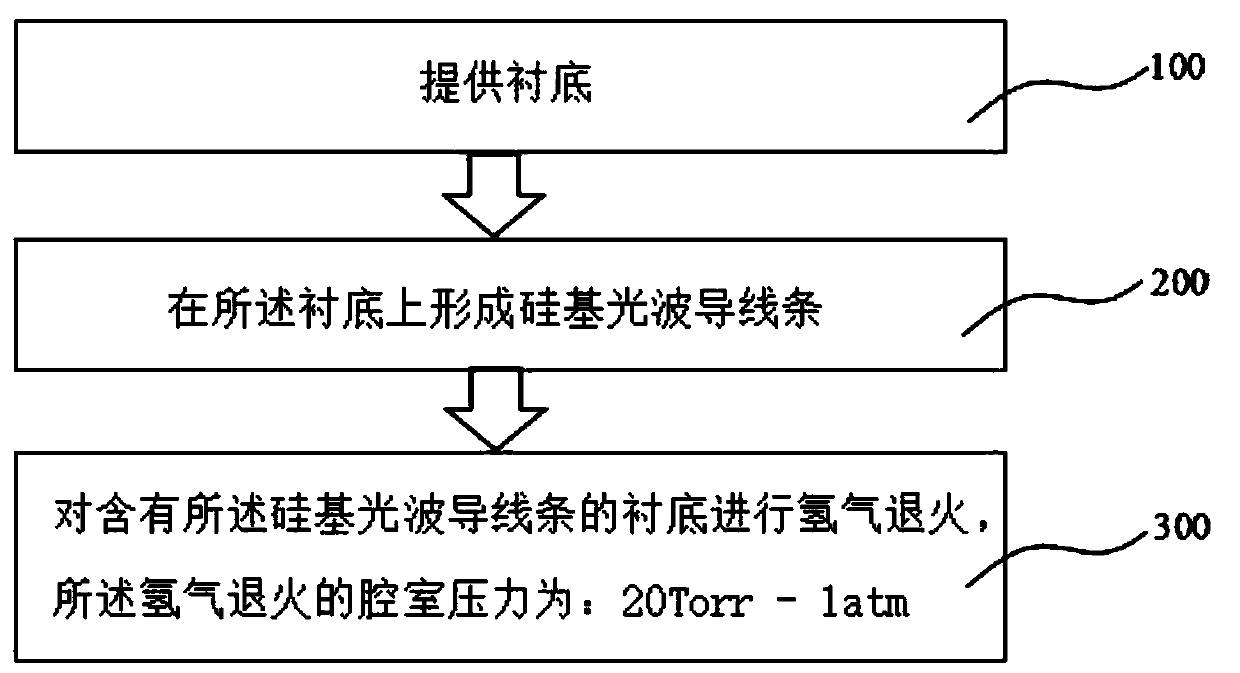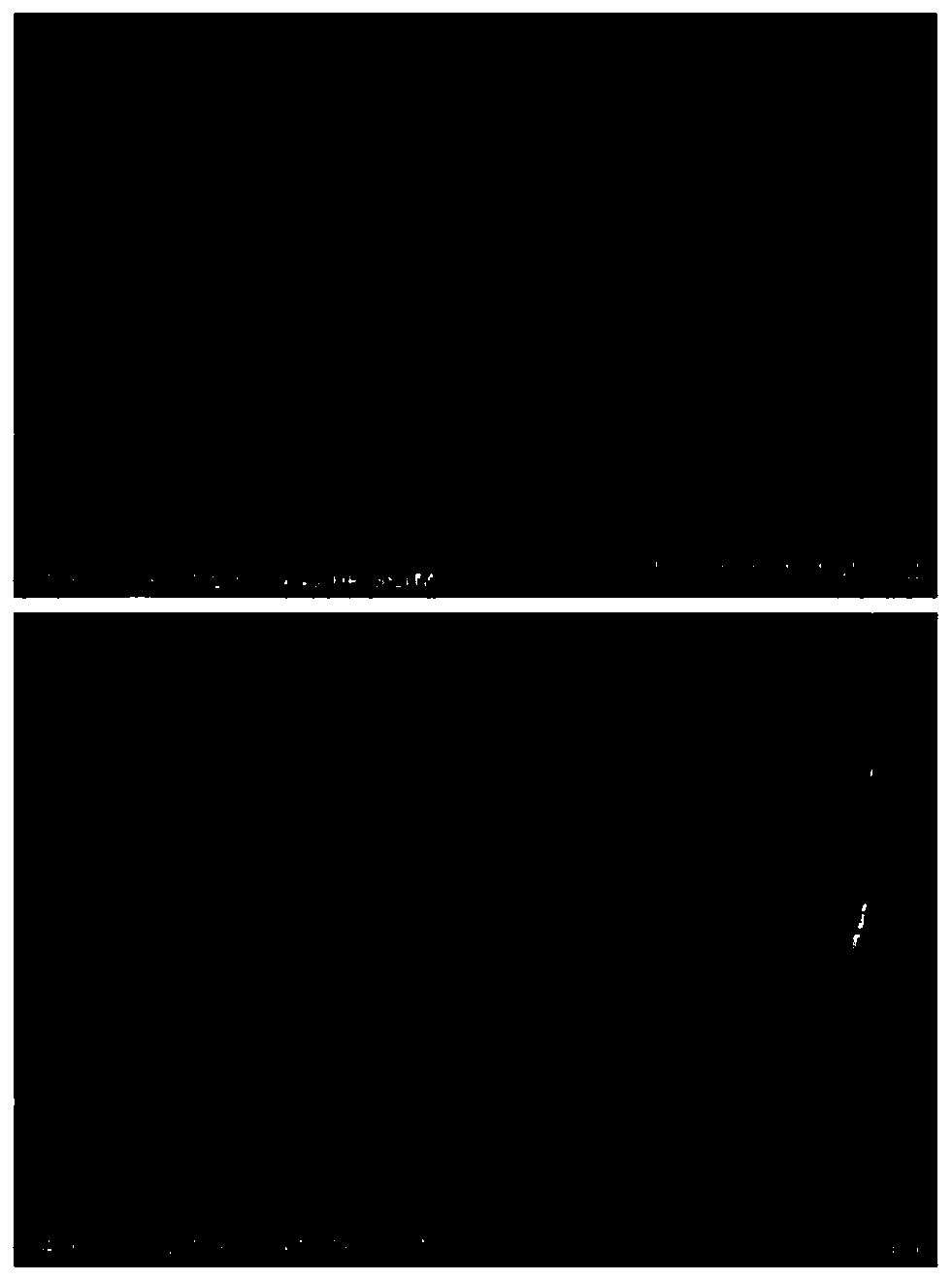A Method for Reducing the Roughness of the Sidewall of Silicon-Based Optical Waveguide
A technology for silicon-based optical waveguides and rough sidewalls, which is applied in the directions of optical waveguides, light guides, optics, etc., can solve the problems of large roughness of the sidewalls of silicon-based optical waveguides, and reduce the roughness of the sidewalls and reduce the roughness. , the effect of maintaining shape and size
- Summary
- Abstract
- Description
- Claims
- Application Information
AI Technical Summary
Problems solved by technology
Method used
Image
Examples
Embodiment 1
[0050] providing a substrate; forming a silicon-based optical waveguide bar on the substrate; performing hydrogen annealing on the substrate containing the silicon-based optical waveguide bar, the chamber pressure of the hydrogen annealing is 20 Torr, and the annealing temperature is 950°C, Among them, the heating rate is 2-5°C / s, the annealing time is 10s, the annealing chamber is loaded with hydrogen as a protective gas, and the hydrogen flow rate is 180L / min.
[0051] Under high-temperature annealing conditions, hydrogen interacts with the dangling bonds on the adjacent dimers on the surface of the silicon-based optical waveguide to promote the formation of silicon-hydrogen bonds. Due to the existence of silicon-hydrogen bonds, the flow density vector of silicon-hydrogen bonds tends to migrate from a high-energy state to a low-energy state, which increases the activity of silicon atoms on the surface of the waveguide and increases the atomic mobility, thereby better smoothin...
Embodiment 2
[0053] The difference between Example 2 and Example 1 is that the chamber pressure of the hydrogen annealing is increased from 20 Torr in Example 1 to a standard atmospheric pressure.
[0054] Example 2:
[0055] providing a substrate; forming a silicon-based optical waveguide bar on the substrate; performing hydrogen annealing on the substrate containing the silicon-based optical waveguide bar, the chamber pressure of the hydrogen annealing is 1 atm, and the annealing temperature is 950°C, Among them, the heating rate is 2-5°C / s, the annealing time is 10s, the annealing chamber is loaded with hydrogen as a protective gas, and the hydrogen flow rate is 180L / min.
[0056] Under high-temperature annealing conditions, hydrogen interacts with the dangling bonds on the adjacent dimers on the surface of the silicon-based optical waveguide to promote the formation of silicon-hydrogen bonds. Due to the existence of silicon-hydrogen bonds, the flow density vector of silicon-hydrogen b...
Embodiment 3
[0059] The difference between Example 3 and Example 1 is that the temperature of the hydrogen annealing is adjusted from 950°C in Example 1 to 600°C, the annealing time is adjusted from 10s in Example 1 to 30s, and an etching gas is introduced.
[0060] Example 3:
[0061]providing a substrate; forming a silicon-based optical waveguide bar on the substrate; performing hydrogen annealing on the substrate containing the silicon-based optical waveguide bar, the chamber pressure of the hydrogen annealing is 20 Torr, and the annealing temperature is 600°C, Among them, the heating rate is 2-5°C / s, the annealing time is 30s, the annealing chamber is loaded with hydrogen as a protective gas, the hydrogen flow rate is 180L / min, and the etching gas hydrogen chloride is fed, and the flow rate of hydrogen chloride is 10sccm.
[0062] The etching gas selected in the present invention is preferably hydrogen chloride, but not limited to hydrogen chloride. The flow rate of the hydrogen chlor...
PUM
 Login to View More
Login to View More Abstract
Description
Claims
Application Information
 Login to View More
Login to View More - R&D
- Intellectual Property
- Life Sciences
- Materials
- Tech Scout
- Unparalleled Data Quality
- Higher Quality Content
- 60% Fewer Hallucinations
Browse by: Latest US Patents, China's latest patents, Technical Efficacy Thesaurus, Application Domain, Technology Topic, Popular Technical Reports.
© 2025 PatSnap. All rights reserved.Legal|Privacy policy|Modern Slavery Act Transparency Statement|Sitemap|About US| Contact US: help@patsnap.com



